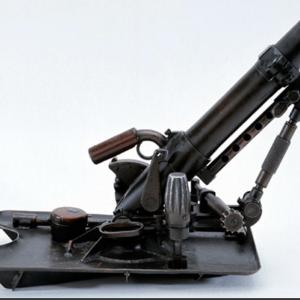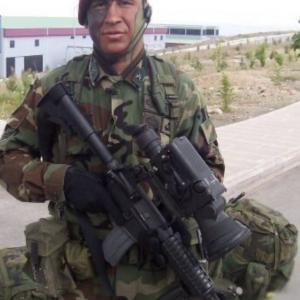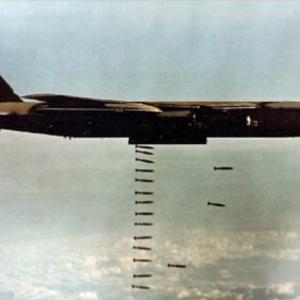
On this day in military history…
The Battle of Leyte Gulf, fought from October 23 to 26, 1944, reached its climax on October 24 and is widely regarded as the largest naval battle in history. This massive confrontation took place in the waters surrounding the Philippine island of Leyte and involved the United States and its allies against the Imperial Japanese Navy. The battle was a decisive part of the Allied campaign to retake the Philippines and ultimately contributed significantly to the final defeat of Japan in the Pacific War.
At its height, the battle involved over 300 ships. The United States and Allied forces committed around 280 vessels, including 8 fleet carriers, 8 light carriers, 12 battleships, 24 cruisers, and numerous destroyers and escort ships. The Japanese, though numerically inferior, deployed a formidable fleet of approximately 67 ships, including 1 fleet carrier, 3 light carriers, 9 battleships (including the giant Yamato and Musashi), 19 cruisers, and dozens of destroyers. The Japanese battle plan, known as Operation Sho-Go, aimed to repel the American invasion of Leyte by luring away the main U.S. naval force and then striking the vulnerable landing forces with their battleships and cruisers.
The Japanese plan was complex and coordinated in three prongs: the Northern Force under Admiral Jisaburo Ozawa was to act as a decoy to draw the U.S. Third Fleet away from the landing beaches; the Center Force under Vice Admiral Takeo Kurita was to push through the Sibuyan Sea and attack Leyte Gulf directly; and the Southern Force, split between two groups under Vice Admirals Shoji Nishimura and Kiyohide Shima, was to converge from the south and strike from Surigao Strait. The Americans, under the overall command of Admiral William F. Halsey (Third Fleet) and Admiral Thomas C. Kinkaid (Seventh Fleet), would be tested by this intricate and desperate maneuver.
The battle unfolded in several distinct engagements, each marked by intense combat and strategic miscalculations. On October 24, the action began in earnest when American carrier aircraft attacked Admiral Kurita’s Center Force in the Sibuyan Sea. In this attack, the massive battleship Musashi was sunk after absorbing an extraordinary number of torpedoes and bombs. Kurita temporarily turned back, leading the Americans to believe his force was retreating. Meanwhile, Admiral Halsey, seeing Ozawa’s Northern Force with its carriers, took the bait and steamed north with his powerful Third Fleet to attack what he believed to be the main threat.
Halsey’s decision to chase Ozawa and his depleted carrier force has remained one of the most debated choices of the war. While his fleet destroyed the Japanese carriers in the Battle off Cape Engaño, the move left the San Bernardino Strait unguarded, allowing Kurita to double back and sail toward the American landing forces at Leyte.
On October 25, Kurita’s force surprised a small U.S. task unit known as “Taffy 3,” composed of escort carriers, destroyers, and destroyer escorts, off the coast of Samar. Despite being heavily outgunned, the American ships mounted a courageous defense. Their destroyers launched torpedo attacks and laid smoke screens, while the escort carriers launched every available aircraft, many armed only with machine guns or depth charges. This Battle off Samar stands as one of the most heroic actions in naval history. Kurita, facing stiff resistance, loss of tactical cohesion, and unsure of American strength, ultimately withdrew—missing the opportunity to destroy the landing forces.
Simultaneously, in the southern part of the battle, Admiral Nishimura's Southern Force was obliterated in the Battle of Surigao Strait, the last battleship-versus-battleship engagement in history. American battleships under Rear Admiral Jesse Oldendorf executed a classic “crossing the T” maneuver, bringing massive firepower to bear on the Japanese column and annihilating it with gunfire and torpedoes. The separate force under Admiral Shima arrived late, realized the disaster unfolding, and quickly retreated.
In total, the Japanese lost four aircraft carriers, three battleships, ten cruisers, and eleven destroyers. More than 10,500 Japanese sailors perished in the battle. The U.S. suffered the loss of one light carrier (USS Princeton), two escort carriers (USS Gambier Bay and USS St. Lo), two destroyers, and a destroyer escort. American casualties numbered around 3,000, including those killed and wounded.
The Battle of Leyte Gulf marked the effective end of the Imperial Japanese Navy as a fighting force. After this engagement, Japan could no longer mount large-scale naval operations. The loss of experienced sailors, aircraft, and capital ships irreparably crippled its ability to contest American dominance at sea. Additionally, the battle saw the first organized use of kamikaze attacks, signaling a shift in Japanese tactics born of desperation.
Strategically, Leyte Gulf ensured that the Philippines would be recaptured by the Allies, cutting off Japan from its resource-rich holdings in Southeast Asia. The destruction of so many Japanese warships allowed the U.S. Navy to press forward with amphibious invasions with reduced risk, paving the way to Okinawa and eventually to Japan itself. The battle's outcome underscored American industrial and naval supremacy, setting the stage for the final phase of the Pacific War.










